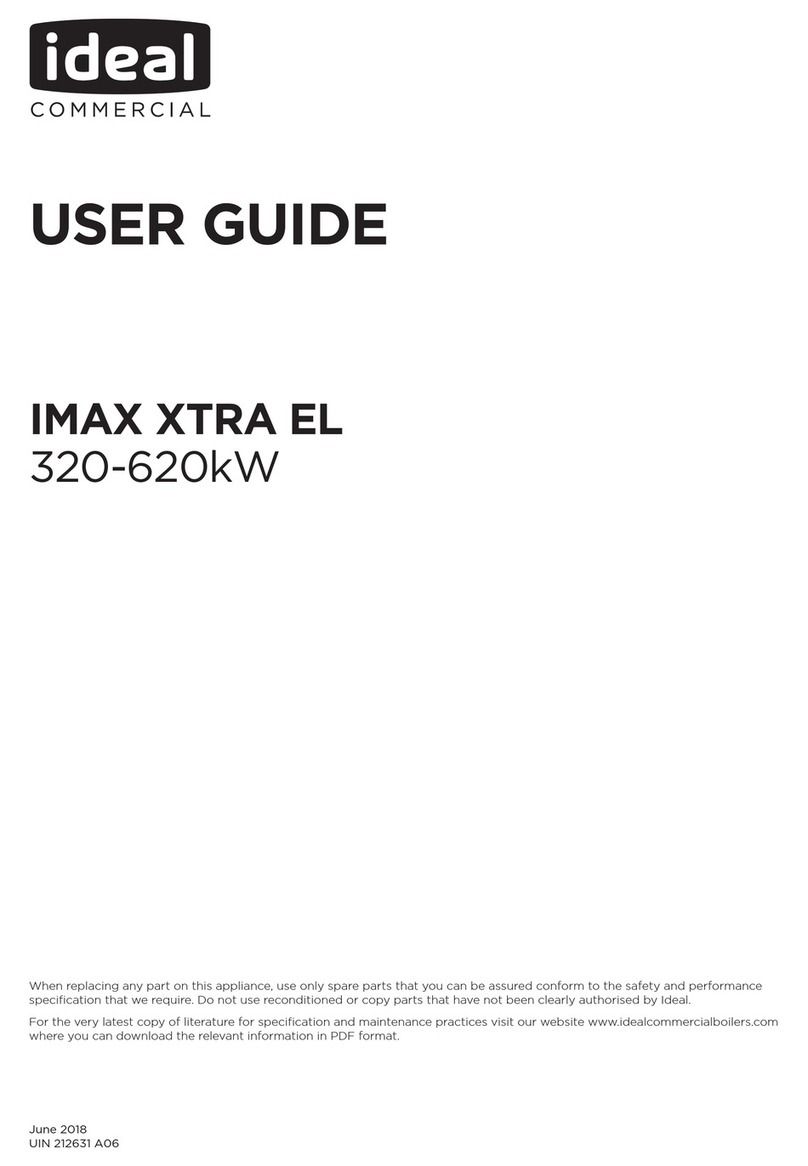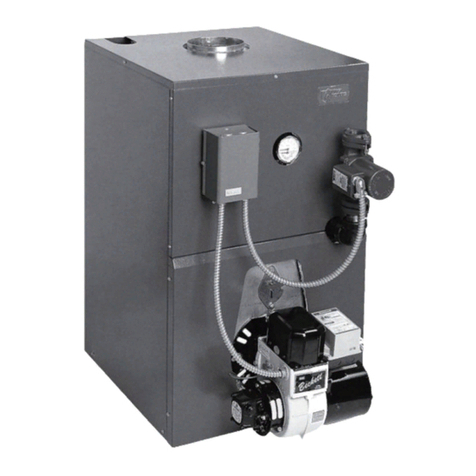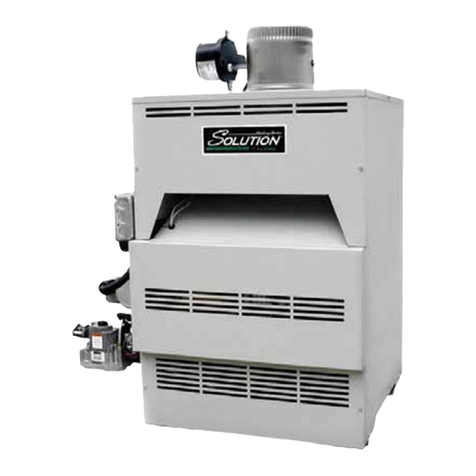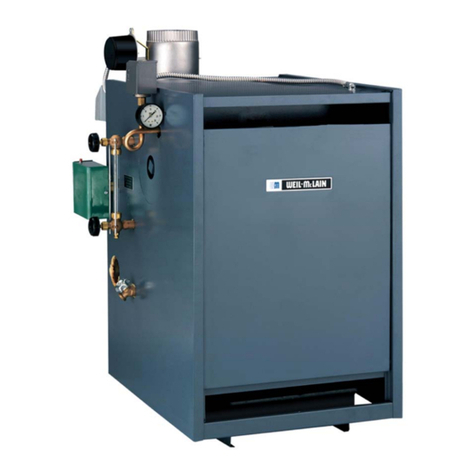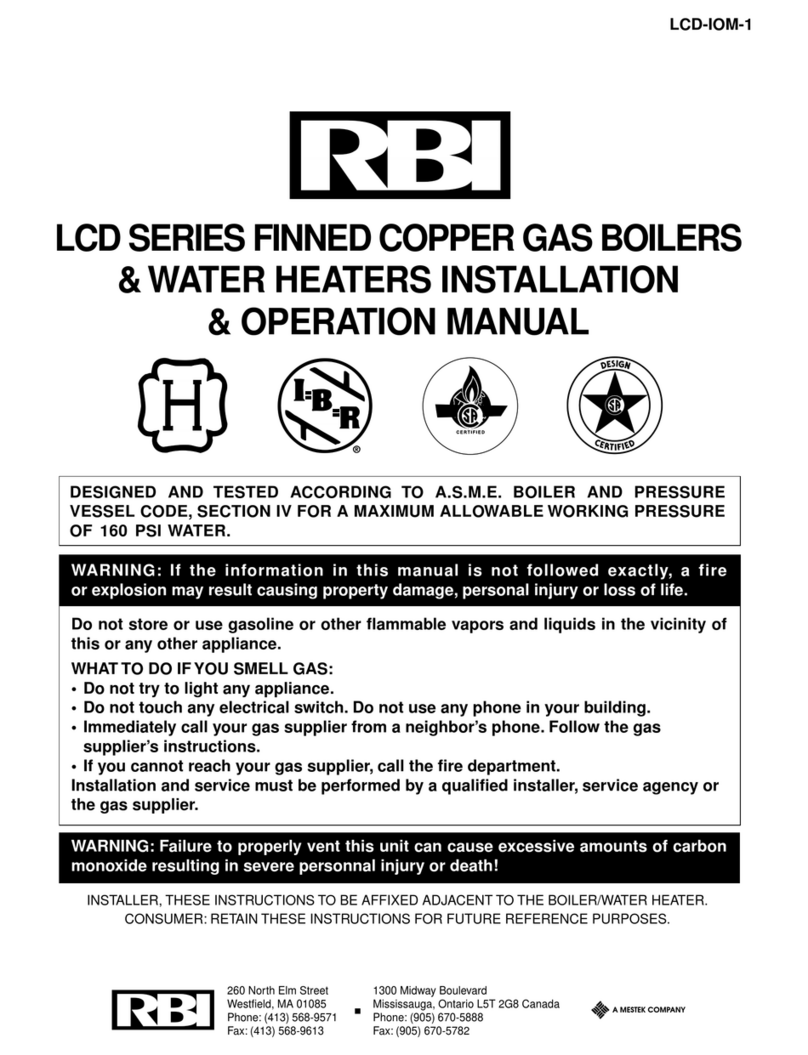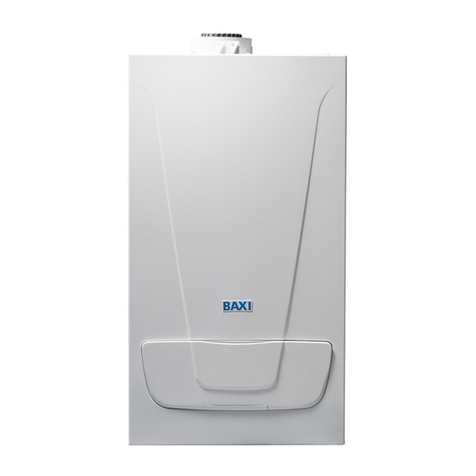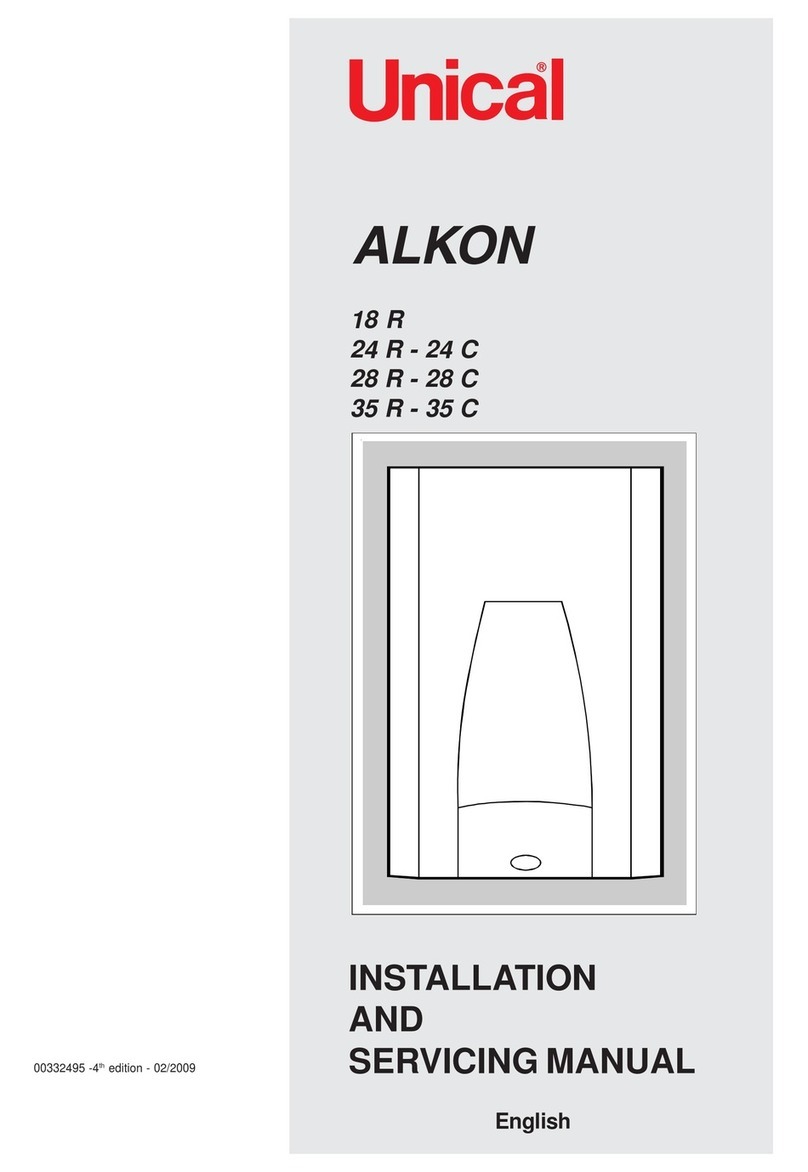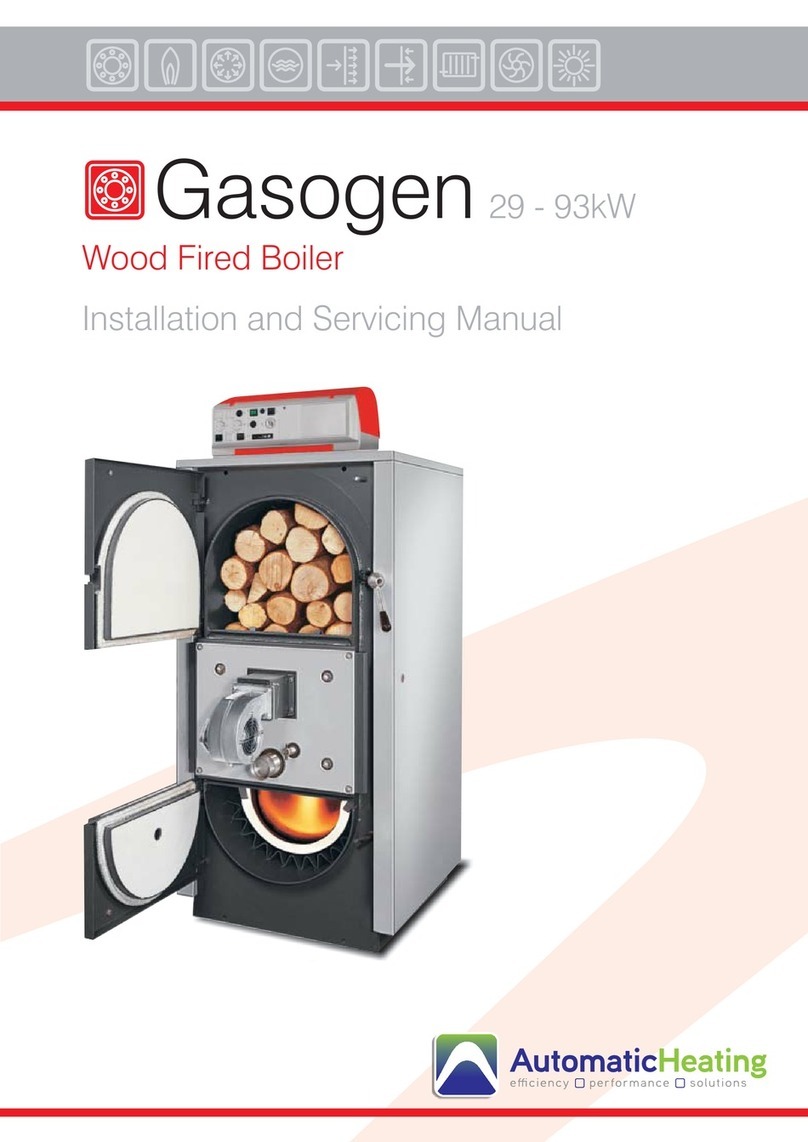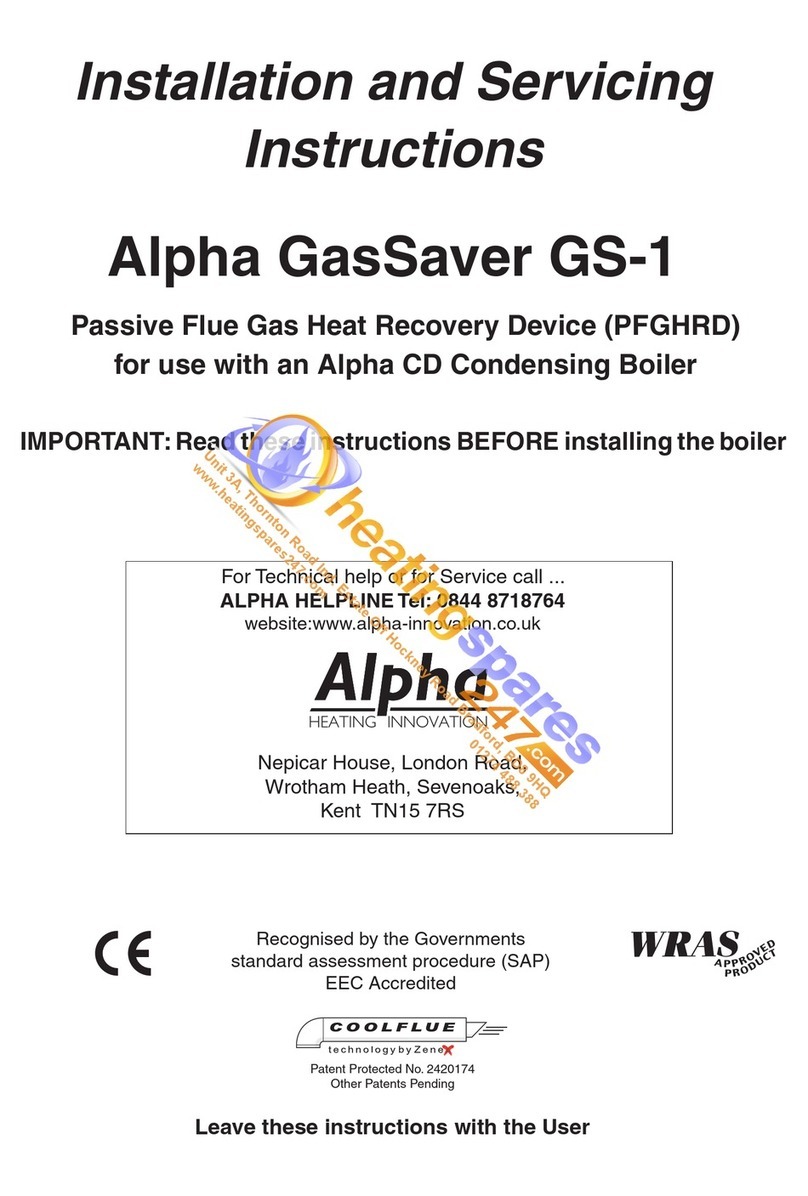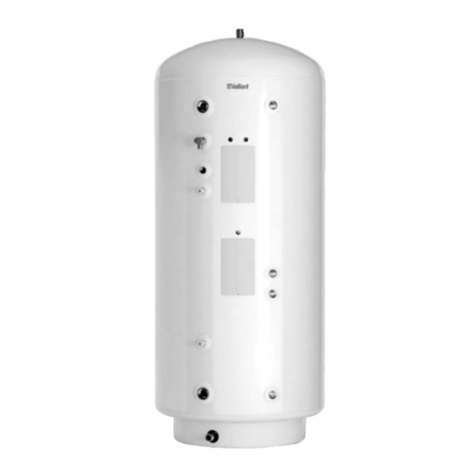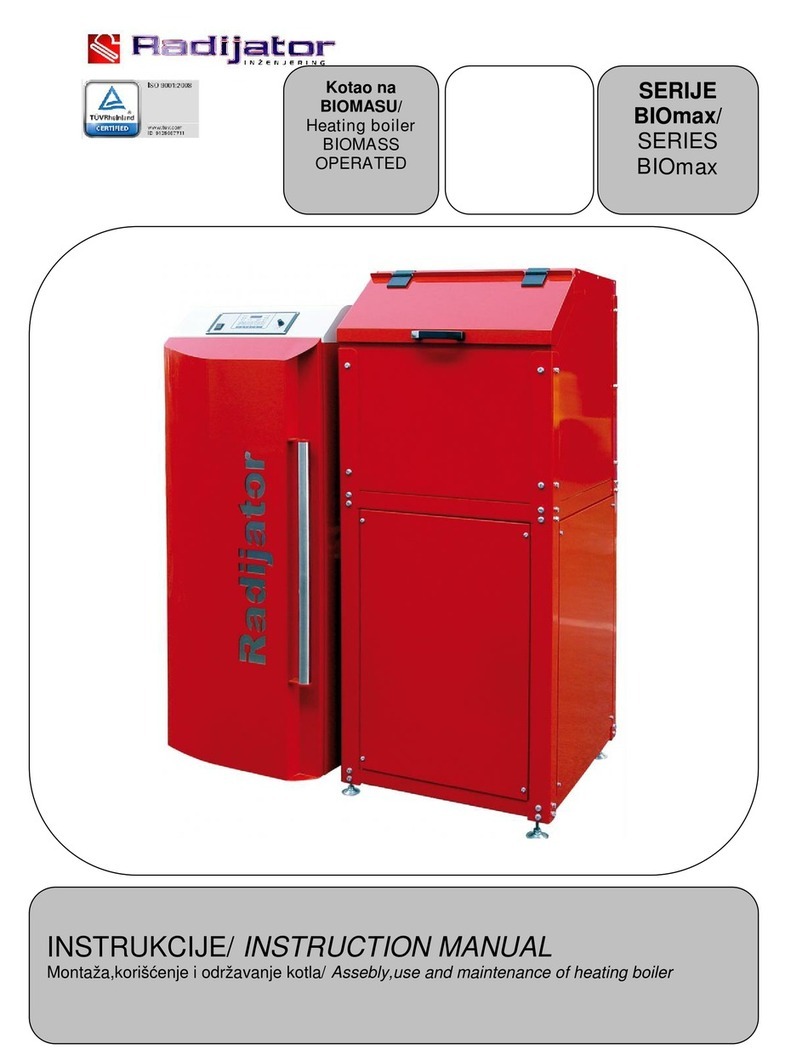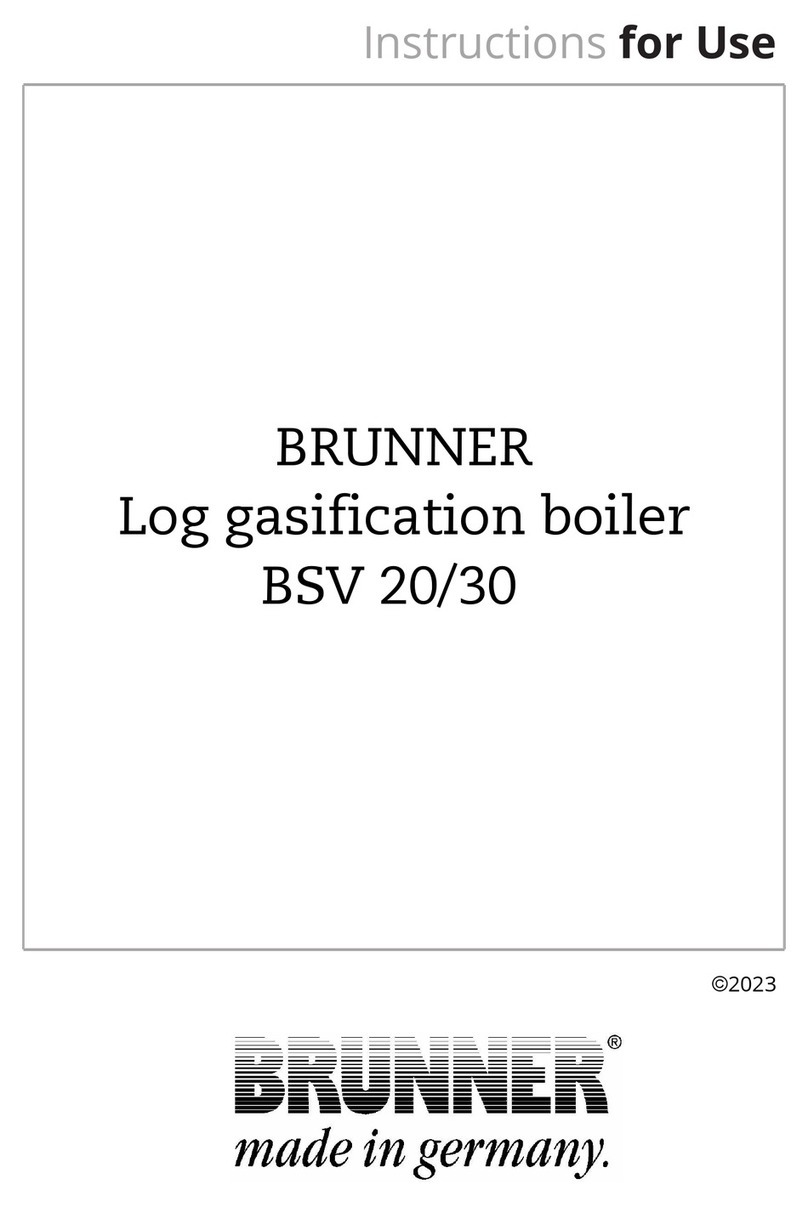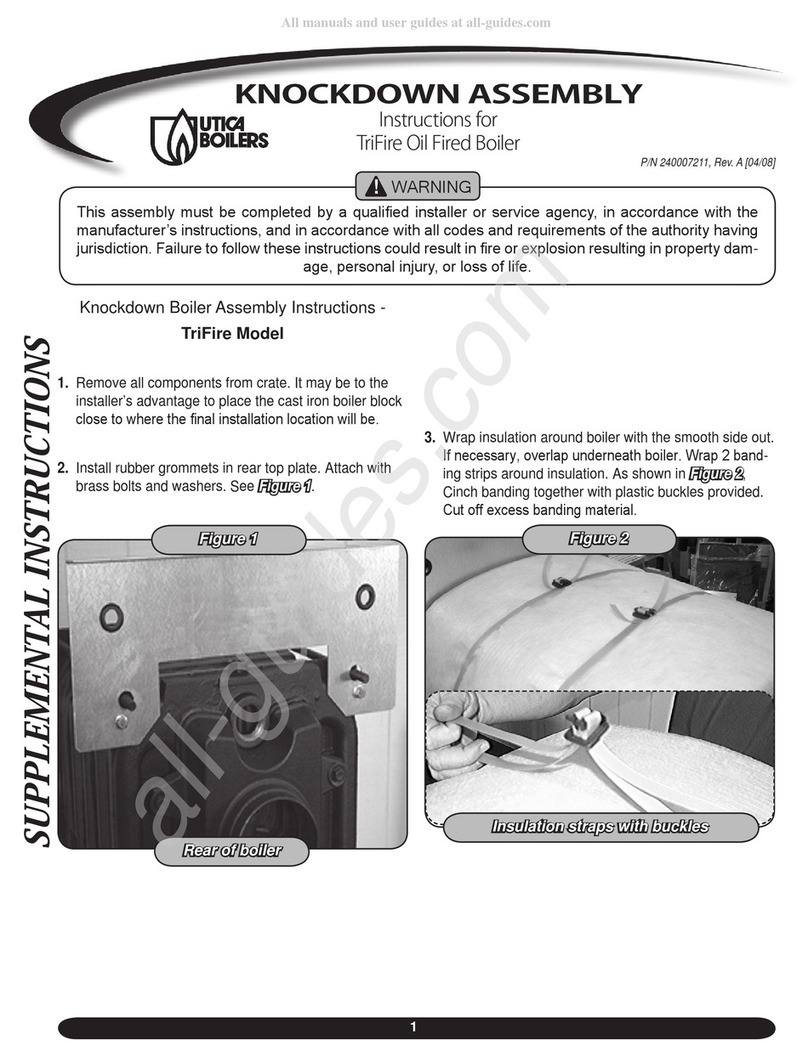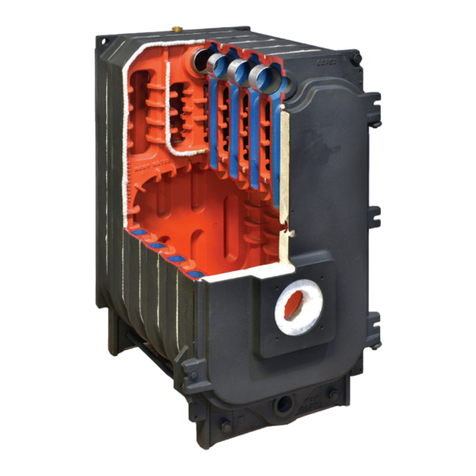
4
United States installations must comply
with:
• State and local plumbing, heating and
electrical codes.
• National codes where applicable.
• Standard for Controls and Safety Devices
for Automatically Fired Boilers, ANSI/ASME
CSD-1, – latest edition, when required.
• National Electrical Code, ANSI/NFPA 70, –
latest edition and any additional national,
state or local codes.
IMPORTANT INFORMATION
Please read this page carefully.
WARNING
!
Homeowner:
• For homeowner or person responsible
for simple start-up and routine
maintenance of the system. Instructions
must be followed to assure proper
operation of your boiler.
In addition, it is your responsibility to:
• Have boiler and burner installed by a
qualified installer.
• Have boiler and burner serviced annually
by a qualified service technician.
• Review and understand start-up and
routine maintenance procedures with
qualified service technician.
• Perform routine maintenance as
described on page 29
Service Technician:
• For a qualified service technician who
has the necessary equipment to check
the boiler and system performance, and
is responsible for start-up and service of
boiler and system.
• All instructions in this manual must be
followed to assure proper operation of
this boiler.
• Annually service boiler and burner to
assure proper operation. See page 29 for
service record.
• Review and explain start-up and
routine maintenance procedures with
homeowner.
• Fire, explosion, asphyxiation and electrical shock hazard. Improper installation could result in
death or serious injury. Read this manual and understand all requirements before beginning
installation.
• Modification, substitution or elimination of factory equipped, supplied or specified
components could result in death or serious injury.
• Installation or venting a boiler or any other oil appliance with improper methods or materials
mayresult in serious injury or death due to fire or to asphyxiation from poisonous gases such
as carbon monoxide which is odorless and invisible.
• Fire, Explosion, Asphyxiation, Electrical shock hazard, Flooding will result in damages such as
electrical problems, corrosion, inoperative parts, mold and other unforeseen issues which
can occur over time. Any equipment determined by a professional as damaged by a flood,
defined as excess of water or other liquid, shall be replaced. Failure to follow these directions
will result in a Hazardous Situation.
WARNING
!
WARNING
!
WARNING
!
• dizziness
• vision problems
• shortness of breath
• headache
• loss of muscle
control
• unclear thinking
• nausea
• weakness
• unconsciousness
Symptoms of CO poisoning include the following:
WARNING
!
IF ANY OF THE SYMPTOMS OCCUR, VACATE THE
PREMISES IMMEDIATELY AND CONTACT A QUALIFIED
HEATING SERVICE COMPANY, THE GAS COMPANY OR
THE FIRE DEPARTMENT.
